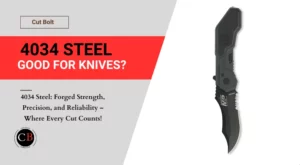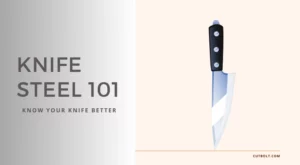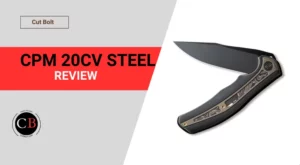Welcome to the ultimate showdown between D2 Steel and S30V – two heavyweight contenders in the world of knife metals. Both boast impressive performance, but choosing the right one can feel like navigating a minefield. Fear not, intrepid bladeheads! This in-depth comparison will slice through the confusion, revealing the strengths and weaknesses of each contender.
Whether you’re a seasoned knifemaker or a curious collector, get ready to unlock the secrets of D2’s legendary wear resistance and S30V’s razor-sharp edge retention. We’ll dissect their toughness, corrosion resistance, sharpening demands, and price points, leaving you equipped to conquer your next blade-building project with confidence.
So, buckle up, grab your favorite whetstone, and join us as we answer the burning question: D2 steel vs S30V – who will reign supreme in your knife collection?
Key Takeaways
- D2 Steel and S30V are popular choices for knife making due to their durability and precision.
- D2 Steel is known for its toughness, wear resistance, and excellent corrosion resistance.
- S30V Steel boasts exceptional edge retention, corrosion resistance, and excellent sharpenability.
- Edge retention is a crucial factor to consider when selecting a knife steel for long-lasting blade performance.
- The overall performance of a knife steel is determined by factors such as heat treatment, usage, strength, toughness, and corrosion resistance.
Before we go deep into the comparison of both steel, here is a quick snap at their composition:
Composition of CPM S30V and D2:
| Steel | Carbon | Chromium | Vanadium | Molybdenum |
| CPM S30V | 1.45% | 14% | 4% | 3% |
| D2 | 1.50% | 12 – 13% | 0.60% | 0.80% |
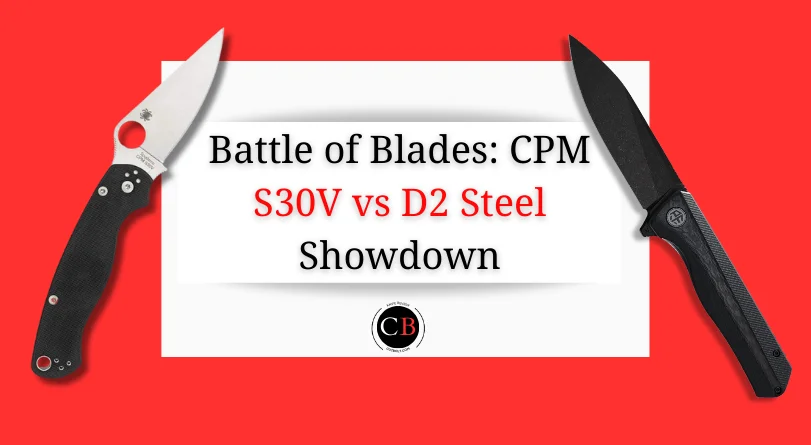
- Introduction to D2 and S30V Steel
- Edge Retention: The Key to a Long-Lasting Blade
- Comparing Edge Retention of D2 Steel and S30V
- Factors Affecting Edge Retention
- Strength and Toughness: Beyond Edge Retention
- Comparing Strength and Toughness of D2 Steel and S30V
- Corrosion Resistance: Protecting Your Investment
- My Opinion D2 vs S30V Steel
- FAQs: S30V vs D2 Steel
- Final Words: D2 Steel vs S30V
Introduction to D2 and S30V Steel
In this section, I will introduce you to two powerful contenders of knife making: D2 Steel and S30V Steel.
D2 Steel is a high-carbon tool steel known for its remarkable toughness and wear resistance. Its composition includes a significant amount of chromium, which not only enhances its durability but also provides excellent corrosion resistance. Knives made with D2 Steel can withstand heavy use and remain sharp even under challenging conditions, making them a favorite among enthusiasts and professionals alike.
S30V Steel, on the other hand, is a powdered stainless steel that has gained immense popularity for its unparalleled edge retention capabilities. It is crafted using advanced technology, resulting in a fine grain structure that allows for exceptional sharpenability. Knives made with S30V Steel can maintain their sharpness for extended periods, promising precision and reliability in cutting tasks.
Both D2 Steel and S30V Steel have their unique strengths, making them sought-after choices for knife makers and users. In the upcoming sections, we will delve deeper into the specific attributes of these steels to help you make an informed decision when selecting the perfect knife metal.
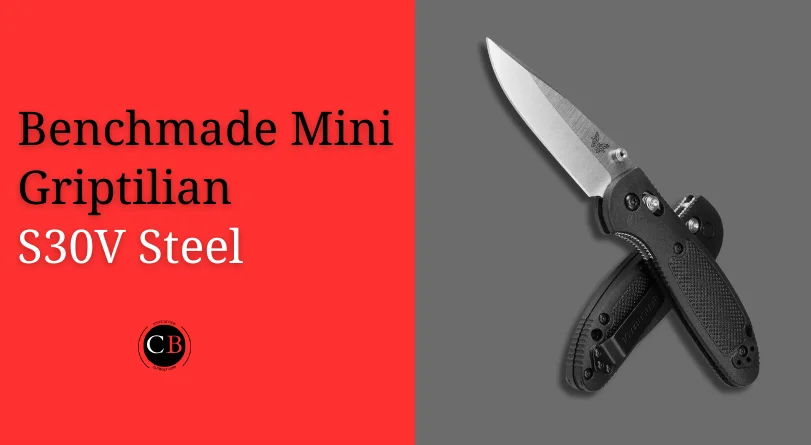
Edge Retention: The Key to a Long-Lasting Blade
When choosing a knife, edge retention is an important factor to consider. After all, a blade that can hold its edge for a long time ensures durability and precision in cutting tasks. Let us get into the edge retention capabilities of two popular knife steels: D2 Steel and S30V. Let’s explore the performance of these steels and discuss the factors that can affect their edge retention.
Real-world examples serve as the backbone of our analysis. By examining the edge retention abilities of D2 Steel and S30V, we can gain valuable insights into their respective strengths and weaknesses. These insights will help knife enthusiasts and professionals make informed decisions when selecting the right steel for their cutting needs.
Now, you might be wondering what factors can affect edge retention. I’m glad you asked. Factors such as heat treatment and usage patterns can play a significant role in determining how long a blade will maintain its sharpness. So, in this section, I will shed light on these key elements and their impact on the edge retention of both D2 Steel and S30V.
Comparing Edge Retention of D2 Steel and S30V
A durable blade that maintains its sharpness over time ensures precision and longevity in your cutting tasks.
D2 Steel, known for its exceptional durability, offers impressive edge retention. With a high carbon and chromium content, D2 Steel provides excellent wear resistance, allowing the blade to maintain its sharpness even after extended use. This makes D2 Steel a popular choice for heavy-duty cutting tasks where edge retention is crucial.
On the other hand, S30V Steel is renowned for its exceptional edge retention properties. Made with a powdered stainless steel composition, S30V offers excellent wear resistance and a fine-grain structure, enhancing its ability to maintain a razor-sharp edge for prolonged periods. This makes S30V a preferred option for applications that require prolonged cutting performance, such as outdoor activities and survival situations.
“I have been using a D2 Steel knife for years, and its edge retention is simply remarkable. Even after countless challenging cutting tasks, the blade remains sharp and efficient. It’s the ideal steel for demanding situations.” – Alex Thompson, Outdoor Enthusiast
“As someone who regularly goes camping and engages in survival activities, S30V Steel has been my go-to choice. Its edge retention is exceptional, allowing me to tackle various tasks without worrying about frequent resharpening. I highly recommend it to fellow outdoor enthusiasts.” – Sarah Miller, Survival Expert
Both D2 Steel and S30V offer impressive performance. However, the choice between the two ultimately depends on the specific requirements of your cutting tasks.
- If you prioritize maximum durability and edge retention in heavy-duty applications, D2 Steel may be the ideal choice.
- On the other hand, if extended cutting performance and precision are your main concerns, S30V Steel offers outstanding edge retention for demanding tasks.
| D2 Steel | S30V Steel | |
| Edge Retention | Excellent | Exceptional |
| Durability | High | High |
| Real-World Examples | Retains sharpness even after heavy use in challenging cutting tasks | Maintains a razor-sharp edge for prolonged periods in demanding outdoor activities |
By understanding the edge retention capabilities of D2 Steel and S30V, you can choose the steel that best aligns with your specific cutting requirements. Whether you prioritize durability in heavy-duty tasks or extended cutting performance in outdoor settings, these steels offer impressive edge retention to ensure your knife remains sharp and reliable.
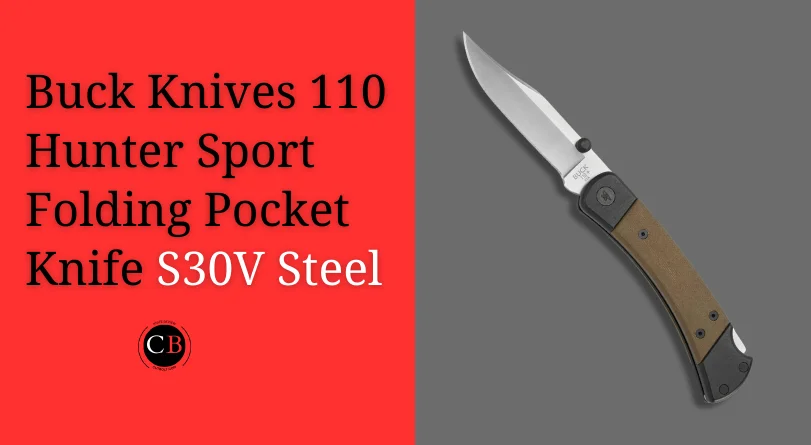
Factors Affecting Edge Retention
When considering the edge retention of knives made from D2 Steel and S30V, it is important to understand that it is not solely determined by the type of steel used. Several factors come into play, affecting the longevity and sharpness of the blade.
Heat Treatment
The heat treatment process plays a crucial role in enhancing the edge retention of both D2 Steel and S30V. Through proper heat treatment, the steel’s microstructure can be optimized, allowing for increased hardness and wear resistance. However, it is essential to strike the right balance, as excessive hardness can make the blade more susceptible to chipping.
Usage Patterns
How a knife is used can significantly impact its edge retention. Factors such as cutting techniques, frequency of use, and types of materials being cut can all play a role. Knives used for heavy-duty tasks or frequent cutting of hard materials may experience faster edge dulling compared to those used for lighter duties.
Maintenance
Proper maintenance is key to prolonging the sharpness of a knife’s edge. Regular cleaning, drying, and lubrication help prevent corrosion and keep the blade in optimal condition. Using the appropriate sharpening techniques and tools also affects the edge retention. Improper sharpening can lead to excessive metal removal, shortening the blade’s lifespan.
“The interplay of factors such as heat treatment, usage patterns, and maintenance can greatly influence the edge retention of knives made from D2 Steel and S30V. Understanding and controlling these factors is essential to ensure long-lasting sharpness and optimal performance.” – Knife Expert
In conclusion, while the choice of steel is important, it is the combination of factors such as heat treatment, usage patterns, and maintenance that ultimately determines the edge retention of a knife. By considering these factors carefully, you can select a knife that will deliver exceptional durability and precision in your cutting tasks.
| Factor | Affects Edge Retention |
| Heat Treatment | Optimizes hardness and wear resistance |
| Usage Patterns | Different tasks and materials can impact edge dulling |
| Maintenance | Regular cleaning, drying, lubrication, and proper sharpening techniques |
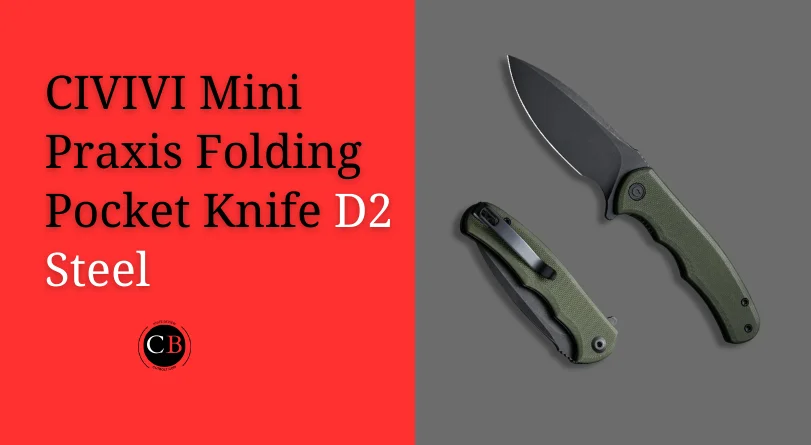
Strength and Toughness: Beyond Edge Retention
While edge retention is undoubtedly crucial in evaluating knife steel performance, it is not the sole determinant of a high-quality blade. The strength and toughness of a steel are equally significant factors that contribute to the overall durability and resilience of a knife. When it comes to the battle between D2 Steel and S30V, understanding their respective strength and toughness characteristics is essential in making an informed decision for your knife making endeavors.
Strength: Withstanding the Test of Time
Strength refers to a steel’s ability to resist deformation, such as bending or breaking, under external forces. In knife making, strength is crucial as it ensures the blade can withstand heavy use without succumbing to damage. Both D2 Steel and S30V exhibit exceptional strength, although they differ in specific areas.
“D2 Steel possesses impressive strength, making it ideal for heavy-duty applications such as chopping and prying. Its high carbon content contributes to its robustness, enabling it to handle demanding tasks without compromising its integrity.“
S30V Steel, on the other hand, strikes a balance between strength and other desirable properties. While not as resilient as D2 Steel in extreme tasks, S30V excels in applications where a finer edge is required, such as precision cutting and slicing.
Toughness: Standing Up to Impact
Toughness reflects a steel’s ability to absorb energy without fracturing. In the context of knife making, toughness comes into play when a blade encounters impact or sudden shocks. A tough steel can withstand these forces without chipping or breaking, enhancing its overall longevity.
“D2 Steel exhibits excellent toughness, making it highly resilient in tasks where the blade may encounter sudden impacts or rough handling. Its composition, including high chromium content, contributes to its durability and ability to avoid chipping or breaking.“
While S30V Steel may not possess the same level of toughness as D2 Steel, it still demonstrates commendable resilience. Its fine grain structure enables it to withstand moderate impacts and maintain its integrity during normal cutting tasks.
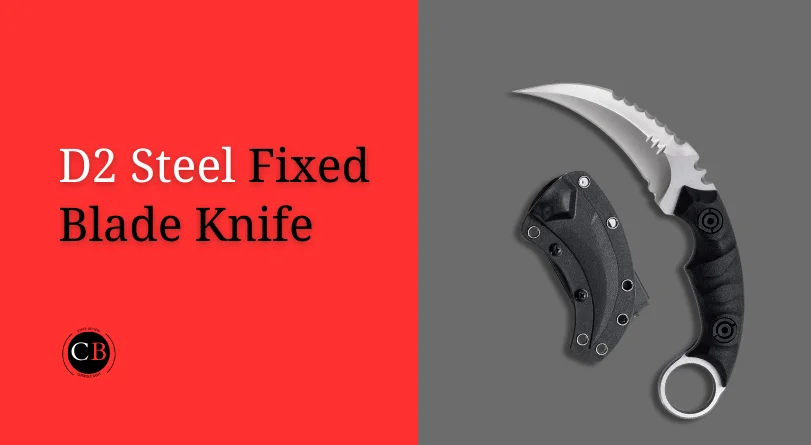
A Comparative Look at Strength and Toughness
To provide a comprehensive comparison of the strength and toughness attributes of D2 Steel and S30V, let’s take a closer look at how they fare:
| Steel | Strength | Toughness |
|---|---|---|
| D2 Steel | Impressive, ideal for heavy-duty applications | Excellent, highly resilient to impacts and rough handling |
| S30V Steel | Balanced, excels in precision cutting and slicing | Commendable, withstands moderate impacts and normal cutting tasks |
As the table shows, D2 Steel outshines S30V in terms of raw strength and toughness, making it a preferred choice for tasks involving heavier use and potential rough handling. However, S30V Steel offers its own advantages with its balanced strength and ability to maintain a finer, long-lasting edge.
When deciding between D2 Steel and S30V for your knife making endeavors, understanding the specific demands of your intended applications is crucial. Consider the strength and toughness requirements of your tasks to determine which steel aligns best with your needs.
Comparing Strength and Toughness of D2 Steel and S30V
When it comes to knife-making, strength and toughness are crucial factors for ensuring durability and resilience. In this section, I will compare the strength and toughness of D2 Steel and S30V to determine their suitability for specific knife-making tasks. By examining their ability to withstand heavy use, impact, and pressure, we can gain valuable insights into their overall performance.
D2 Steel: Unyielding Strength
D2 Steel is renowned for its exceptional strength, making it a popular choice among knife enthusiasts who value durability. With its high carbon content, D2 Steel exhibits remarkable resistance to deformation and wear. This steel can withstand rigorous tasks such as chopping hardwood, prying, and even light hammering without losing its structural integrity.
S30V: Impressive Toughness
S30V Steel, on the other hand, is known for its exceptional toughness, making it an ideal option for demanding cutting applications. With its fine grain structure and precise alloy composition, S30V Steel can absorb and distribute impact forces effectively. This steel is less prone to chipping or breaking, providing superb toughness even in challenging conditions.
“D2 Steel offers unparalleled strength, while S30V Steel provides impressive toughness.”
To further illustrate the contrasting characteristics of these steels, let’s take a look at the following table:
| Steel | Strength | Toughness |
| D2 Steel | High strength, excellent resistance to deformation | Moderate toughness, suitable for heavy-duty tasks |
| S30V Steel | Moderate strength, retains sharpness under heavy use | High toughness, withstands impact forces effectively |
This table clearly highlights the contrasting strengths and weaknesses of D2 Steel and S30V. While D2 Steel excels in terms of raw strength, S30V Steel offers superior toughness.
If you require a knife that can withstand heavy use and resist deformation, D2 Steel is an excellent option. On the other hand, if you prioritize superb toughness and impact resistance, S30V Steel will serve you well.
By understanding the unique strengths and weaknesses of these steels, you can make an informed decision that aligns with your specific knife-making requirements.
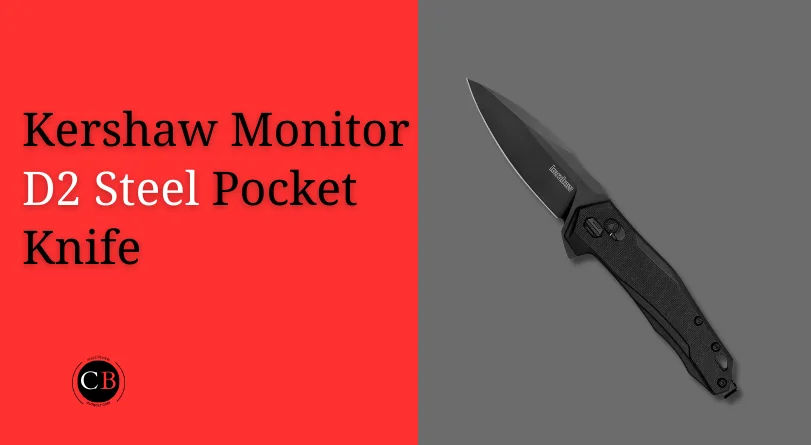
Corrosion Resistance: Protecting Your Investment
When it comes to knife maintenance, ensuring its longevity is essential. One crucial aspect to consider is corrosion resistance, which plays a vital role in protecting your investment from rust and deterioration. In this section, I will explore the corrosion resistance properties of D2 Steel and S30V, two popular knife steels, to help you make an informed choice for your knife.
Corrosion Resistance of D2 Steel
D2 Steel is renowned for its impressive corrosion resistance, making it an excellent choice for outdoor and maritime applications. This steel contains a high chromium content, which forms a protective chromium oxide layer on the surface of the blade. This layer acts as a barrier, preventing moisture and corrosive elements from reaching the steel underneath.
Corrosion Resistance of S30V Steel
S30V Steel also exhibits exceptional corrosion resistance. Its high chromium and vanadium content contribute to its ability to resist corrosion in various environments. The fine grain structure of S30V allows for excellent resistance against pitting, ensuring that your knife remains protected even in harsh conditions.
“The corrosion resistance of both D2 Steel and S30V is outstanding, providing peace of mind for users who rely on their knives in challenging environments.” – Knife enthusiast
By understanding the corrosion resistance properties of D2 Steel and S30V, you can confidently choose the steel that best suits your needs. Whether you require a knife for outdoor adventures or everyday use, selecting a steel with excellent corrosion resistance ensures the durability and longevity of your investment.
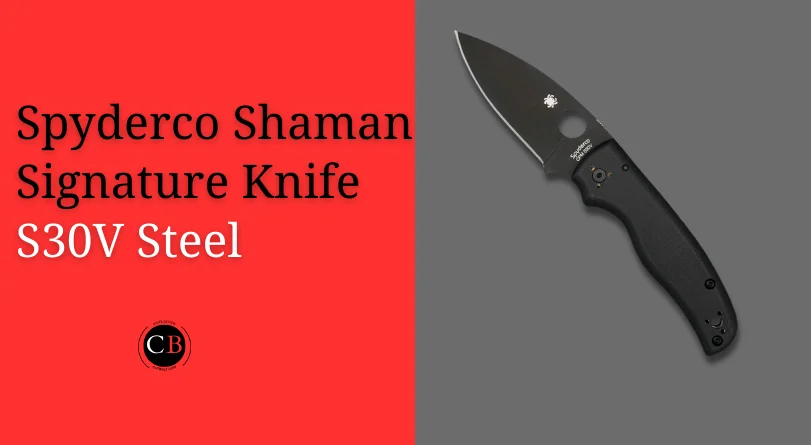
My Opinion D2 vs S30V Steel
After a thorough examination of the edge retention, strength, toughness, and corrosion resistance of D2 Steel and S30V, it is time to conclude the ultimate knife metal duel. Both D2 Steel and S30V exhibit exceptional qualities that make them popular choices among knife enthusiasts and professionals.
I believe that the winner of the D2 Steel vs S30V battle depends on the specific needs and preferences of the user. I have a few points for you to consider below before you choose one from S30V or D2 steel:
- Edge Retention: CPM S30V steel is known for excellent edge retention, meaning it holds its sharpness well over time. D2 steel also offers good edge retention but may require more frequent sharpening compared to S30V.
- Corrosion Resistance: CPM S30V steel has better corrosion resistance than D2 steel, making it a preferred choice for knives used in environments where exposure to moisture is common.
- Toughness: D2 steel is known for its high toughness, which means it can withstand heavy use and impact without chipping or breaking easily. However, S30V steel offers a good balance of toughness and hardness.
- Ease of Sharpening: D2 steel can be more challenging to sharpen compared to S30V steel due to its high hardness. S30V steel, while also hard, may be slightly easier to sharpen and maintain.
- Cost: Generally, knives made with CPM S30V steel tend to be more expensive than those made with D2 steel due to the differences in manufacturing processes and materials.
Both CPM S30V and CPM D2 are high-performance knife steels loved for their unique advantages, but choosing between them depends on your specific priorities. Here’s a breakdown to help you decide:
CPM S30V:
Pros:
- Superior edge retention: Holds a sharp edge longer than D2, especially for demanding tasks.
- Better corrosion resistance: Less prone to rust than D2, especially in humid environments.
- Finer grain structure: Allows for a sharper and more refined edge.
- Slightly tougher: Less prone to chipping or breaking compared to D2.
Cons:
- More difficult to sharpen: Requires more skill and specialized equipment to achieve a razor-sharp edge.
- Slightly more expensive: Costs a bit more than D2 steel.
CPM D2:
Pros:
- Excellent wear resistance: Resists abrasion and wear better than S30V, making it ideal for heavy-duty tasks.
- Easier to sharpen: Takes an edge quickly and responds well to standard sharpening methods.
- More affordable: Typically cheaper than S30V steel.
Cons:
- Lower edge retention: Doesn’t hold an edge as long as S30V, requiring more frequent touch-ups.
- Poorer corrosion resistance: More susceptible to rust and staining, especially in wet or humid environments.
- Slightly less tough: Has a higher risk of chipping or breaking compared to S30V under extreme stress.
Here’s a quick decision guide:
- Choose S30V if: You prioritize edge retention, corrosion resistance, and a fine cutting edge, even if sharpening requires more effort.
- Choose D2 if: You prioritize wear resistance, easy sharpening, and affordability, and are willing to accept slightly lower edge retention and higher maintenance.
Ultimately, the best choice depends on your individual needs and preferences. Consider the types of tasks you’ll use the knife for, your sharpening skills, and your budget to make an informed decision.
Summary:
- D2 Steel exhibits exceptional strength, toughness, and wear resistance.
- S30V Steel boasts outstanding edge retention, ease of sharpening, and corrosion resistance.
- The choice between D2 Steel and S30V depends on individual preferences and specific cutting needs.
| Criteria | D2 Steel | S30V Steel |
|---|---|---|
| Edge Retention | Excellent | Outstanding |
| Strength | High | Good |
| Toughness | Great | Good |
| Corrosion Resistance | Good | Very Good |
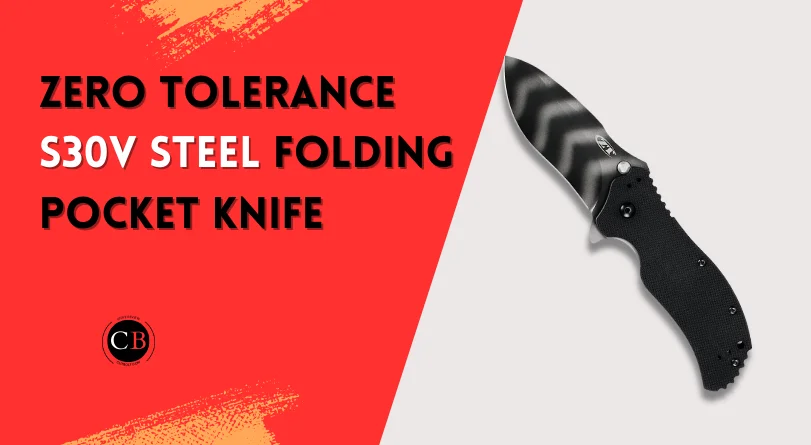
FAQs: S30V vs D2 Steel
What are the key characteristics of D2 Steel and S30V Steel?
D2 Steel is known for its toughness, wear resistance, and high chromium content for corrosion resistance. S30V Steel is a powdered stainless steel with exceptional edge retention and corrosion resistance due to its fine grain structure.
Which steel has better edge retention between D2 Steel and S30V Steel?
Both D2 Steel and S30V Steel have excellent edge retention capabilities. However, S30V Steel is often considered to have superior edge retention (see datasheet), making it an ideal choice for tasks that require prolonged cutting without the need for frequent resharpening.
What factors can affect the edge retention of D2 Steel and S30V Steel?
The edge retention of both D2 Steel and S30V Steel can be influenced by factors such as heat treatment, usage patterns, and maintenance. Proper heat treatment, consistent usage, and regular maintenance can help maximize the longevity of sharpness for both steels.
How do D2 Steel and S30V Steel compare in terms of strength and toughness?
D2 Steel and S30V Steel are both renowned for their strength and toughness. However, D2 Steel is typically considered to be slightly stronger, while S30V Steel offers a good balance of strength and toughness. The choice between the two depends on specific knife-making applications.
Which steel provides better corrosion resistance, D2 Steel or S30V Steel?
When it comes to corrosion resistance, S30V Steel outperforms D2 Steel. S30V Steel’s powdered metallurgy composition and fine grain structure provide excellent resistance against rust and oxidation, making it well-suited for use in environments where moisture or exposure to harsh elements is a concern.
Final Words: D2 Steel vs S30V
After thoroughly exploring the characteristics of D2 Steel and S30V, it is clear that both metals have their strengths and weaknesses. D2 Steel impresses with its exceptional edge retention and durability, making it an excellent choice for heavy-duty cutting tasks. On the other hand, S30V stands out for its impressive corrosion resistance and ease of sharpening, making it a versatile option for everyday use.
If you require a robust knife that can handle heavy-duty tasks and retain its edge exceptionally well, D2 Steel is an excellent option. On the other hand, if you prioritize corrosion resistance and ease of sharpening without compromising on performance, S30V is a reliable choice. Both steels offer exceptional qualities and will serve you well in your cutting tasks.

